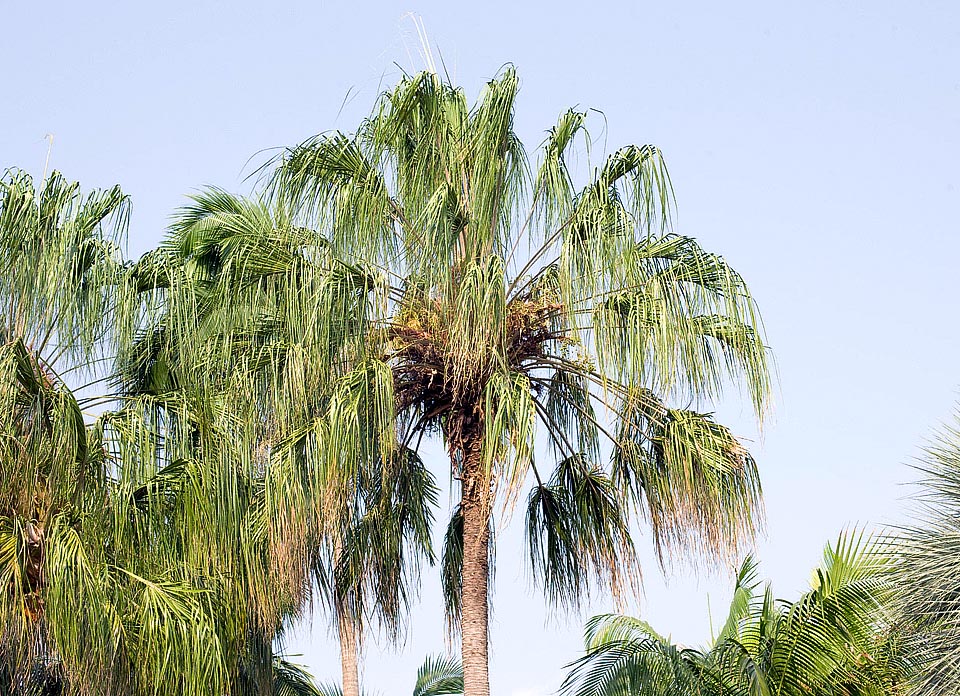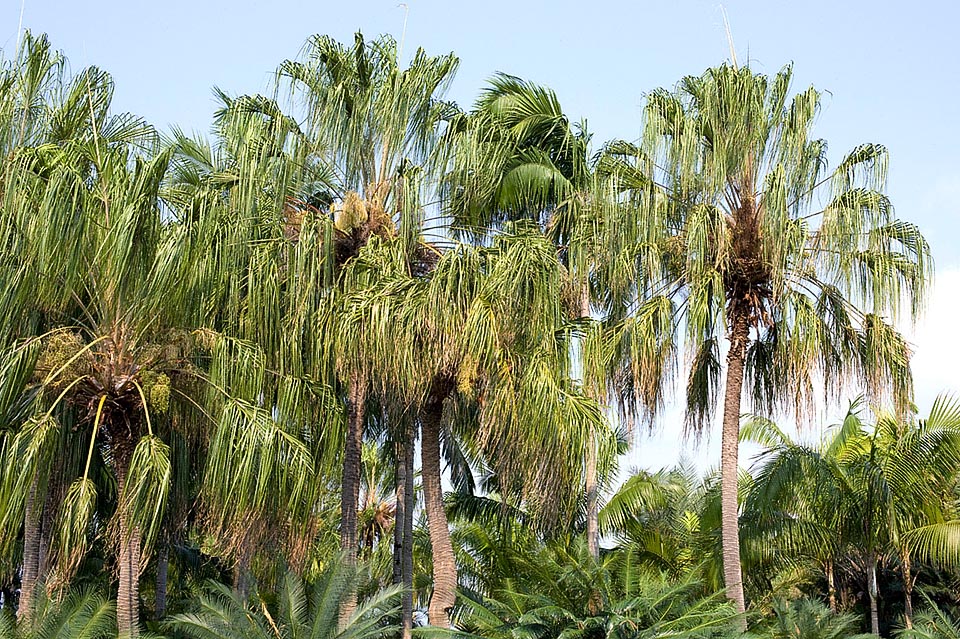Family : Arecaceae

Text © Pietro Puccio

English translation by Mario Beltramini
The plant is native to Australia (Queensland), where is present along the north-eastern coasts at the margins of the pluvial forests and in the open eucalypti forests, often by the margins of the rivers, on chiefly sandy soils, up to about 500 m of altitude.
The genus was dedicated to Patrick Murray, baron of Livingston, who destined, in 1670, his collection and his garden to botanical garden, later become the present ‘Royal Botanic Garden Edinburgh’; the name of the species is the Latin word “decora” = beautiful, elegant, with obvious reference.
Common names: ribbon fan palm, weeping cabage palm (English); latanier pleureur (French); palmeira-leque-de-fita (Portuguese); palma llorona, palmera de cintas, palmera llorona (Spanish); Trauer-Schirmpalme, Trauerschirmpalme (German).
The Livistona decora (W.Bull) Dowe (2004) is a monoecious plant with single stem, tall up to 20 m with a diameter of 25-30 cm widened at the base, of brown colour, tending to the grey in the oldest parts, on which are visible the close marks of the foliar scars and slight vertical cracks.

In Queensland the Livistona decora can be 20 m tall, with a 25-30 cm stem, characterized by the close horizontal traces of the foliar scares © Giuseppe Mazza
The petioles are thin, green, 1,5-2,5 m long, armed at the margins, for the first two thirds of the length, of close thorns, curved and blackish, 0,5 cm long; the base decays for a good part in a fibrous mass which surrounds the stem.
The inflorescences bear between the leaves, they are little longer than the petioles, arcuate and much ramified, carrying tiny hermaphrodite yellow flowers; usually, there are more inflorescences present at the same time.
The fruits are globular, with a diameter of even 1,8 cm, glossy black when ripe, containing one seed only of about 1 cm of diameter. It reproduces by seed, which germinates in 1-3 months, utilizing a substratum formed by normal mould for sowing and coarse sand in equal parts; the growth is fairly fast.

Isolated or in groups and rows, is one of the most ornamental Livistonadue to the typical crown with finely subdivided and drooping leaves © Giuseppe Mazza
It has a fairly good resistance to the saltiness, and therefore may be employed also close to the sea. The utilization as pot plant for the decoration of indoor locations is very limited, as it needs vast spaces and, primarily, a vey high luminosity.
Synonyms: Corypha decora W.Bull (1887); Livistona enervis auct. (1891); Livistona decipiens Becc. (1910).
→ For general notions about ARECACEAE please click here.
